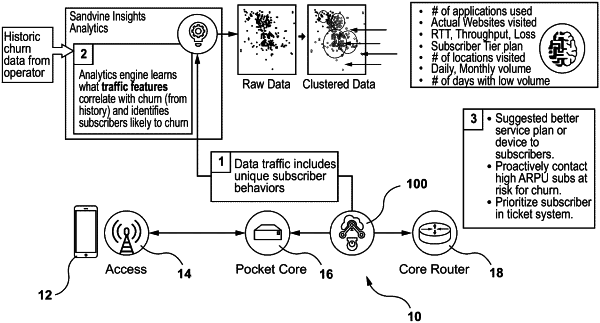| CPC H04L 41/5067 (2013.01) [H04L 41/147 (2013.01); H04L 41/5064 (2013.01); H04L 67/535 (2022.05)] | 20 Claims |

|
1. A method for creating a model for predicting and reducing subscriber churn in a computer network, the method comprising:
for a predetermined time period:
retrieving traffic flow data per subscriber for a plurality of subscribers in the computer network;
determining at least one subscriber metric per subscriber from the traffic flow data;
determining whether the at least one subscriber metric includes data points to be condensed;
determining at least one systemic feature associated with the plurality of subscribers, wherein the at least one systemic feature is based on an access network used by the computer network; and
storing the at least one amalgamated metric and feature;
on reaching the predetermined time period create the model by:
analyzing the at least one subscriber metric and the at least one systemic feature for the predetermined time period and determining a relationship between the at least one subscriber metric, the subscriber quality of experience and the at least one systemic feature;
predicting, per subscriber, whether the subscriber is going to churn within a churn period in the future based on the analysis;
validating the prediction by determining whether the subscriber actually churned during the churn period; and
creating the model based on the validated predictions.
|